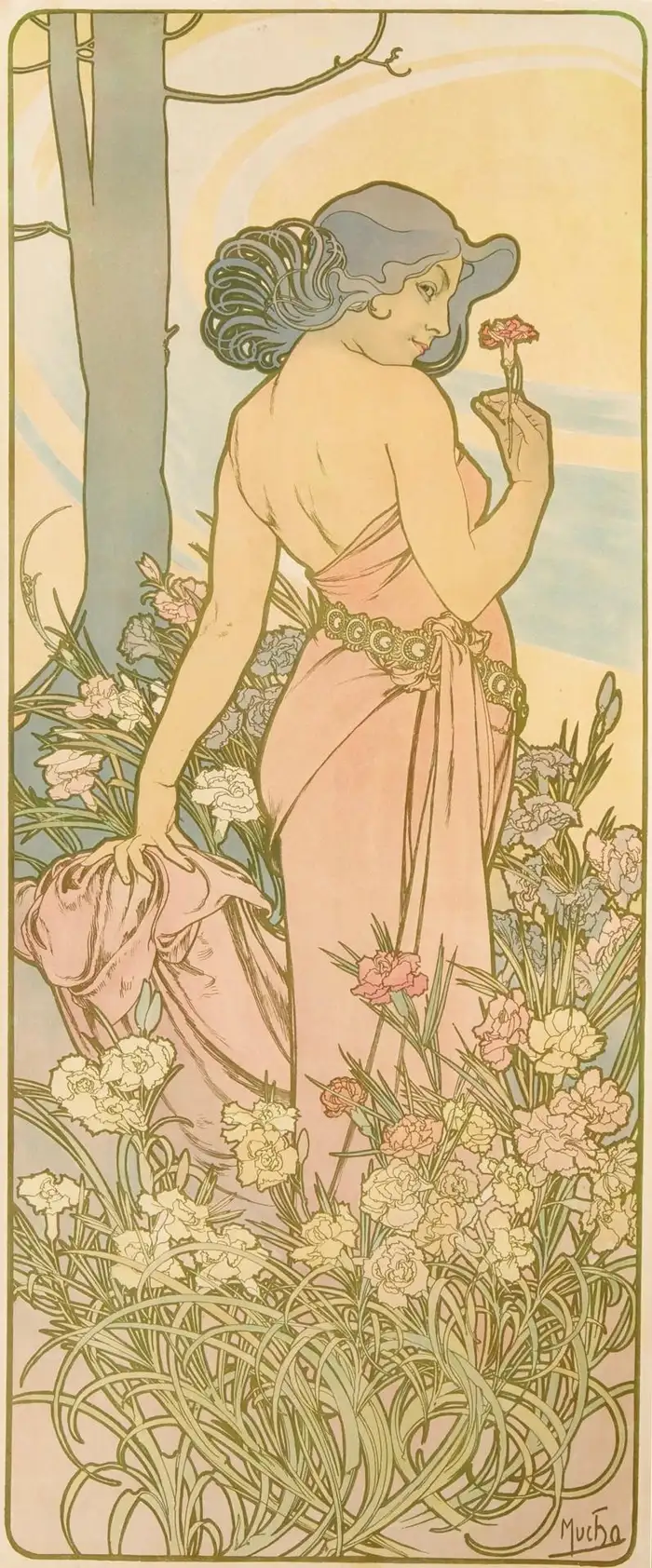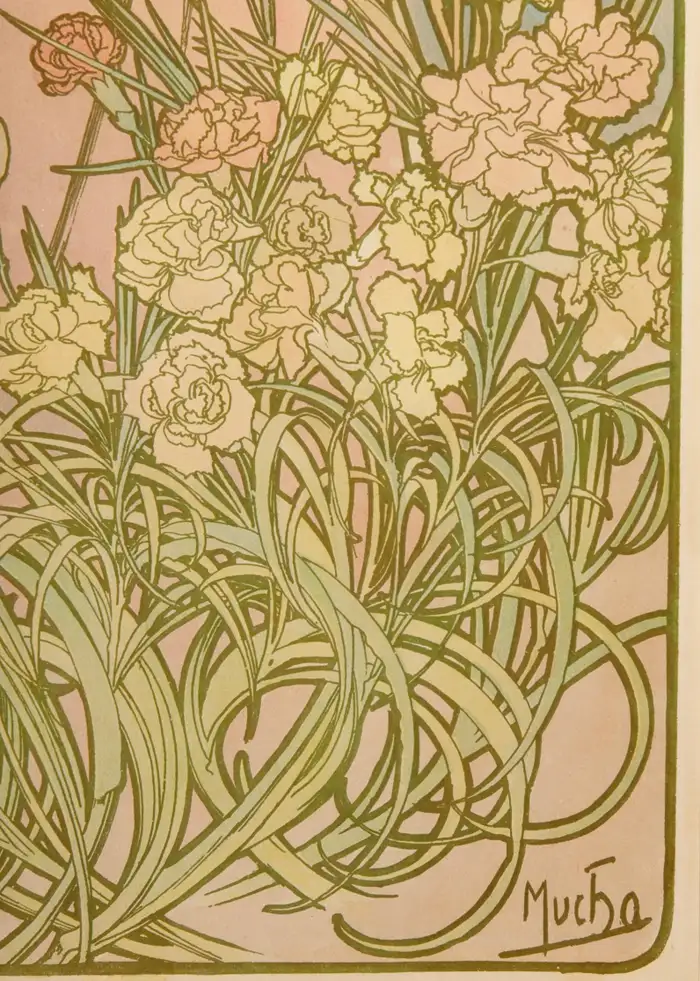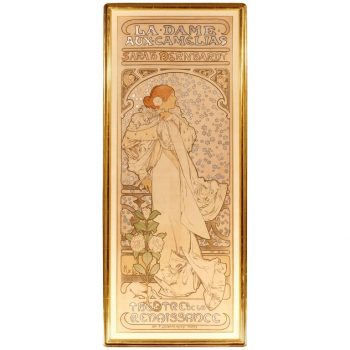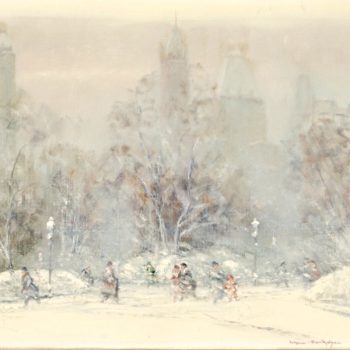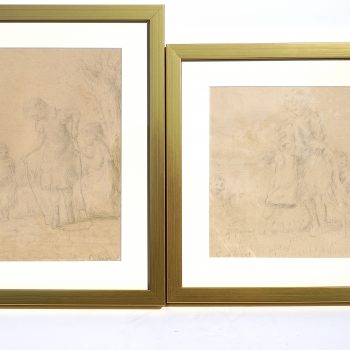Description
Original Alfons Mucha lithograph, “Carnation” from The Flowers Series, 1898, first edition
Vivid colors and detail of femininity, curves and floral design to draw in the viewer. The lady draped in a peach dress with ornate belt turning slightly away showing her shoulder, beautiful face and flowing hair.
Lithograph in colors on paper
Image: 41 x 17.25 Inches (104 x 44 cm) Linen backed
Frame: 53 x 30 Inches
Signed in plate lower right
Condition: Excellent with 3 old repairs under top line on each side of small branch. Unnoticeable unless looked for. Presents beautifully in new museum quality frame.
Mucha was established as a leading poster artist between 1895 and 1900. During this period, six posters by Mucha appeared in Les Maîtres de l’Affiche, Jules Chéret’s monthly publication featuring the best posters of the time selected by him. Also from that time, Mucha’s distinctive style was called ‘le style Mucha’, becoming synonymous with the current ‘Art Nouveau’ style.
In gaining wider public recognition as the ‘Master of the Art Nouveau poster’, Mucha’s success in a new genre – decorative panels (‘panneaux décoratifs’) – played a significant part. Decorative panels were posters without text, a prototype of today’s art posters, designed purely for artistic appreciation or decorating interior walls. It was the printer Champenois who invented this idea from the business point of view: to maximise business opportunity by recycling Mucha’s designs for many different editions. However, it was Mucha who transformed them into a new art form, affordable and available to the wider public, whereas, traditionally, works of art were available only to the privileged few.
It was Mucha’s belief that through the creation of beautiful works of art the quality of life would be improved. He also believed that it was his duty as an artist to promote art for ordinary people. He was able to fulfill both of these objectives by means of his innovative concept of the mass-produced decorative panel. Of the panels, Mucha later wrote: ‘I was happy to be involved in an art for the people and not for private drawing rooms. It was inexpensive, accessible to the general public, and it found a home in poor families as well as in more affluent circles.’
The first of Mucha’s decorative panels were The Seasons (1896), a series of four panels representing the theme of the four seasons. The series proved very popular and it was followed by other popular series including The Flowers (1898), The Arts (1898), The Times of the Day (1899), The Precious Stones (1900) and The Moon and the Stars (1902). These panels illustrate all the typical qualities of the Mucha poster – the beautiful women with suggestive gestures, the decorative use of flowers and flowing hair, the subtle yet striking colors – all combine to create a compelling harmony of vision whose intention is to inspire and elevate the viewer.


